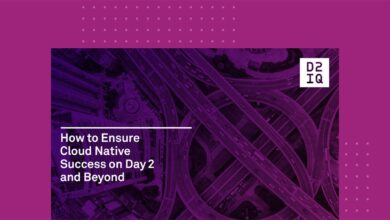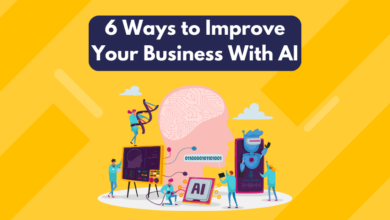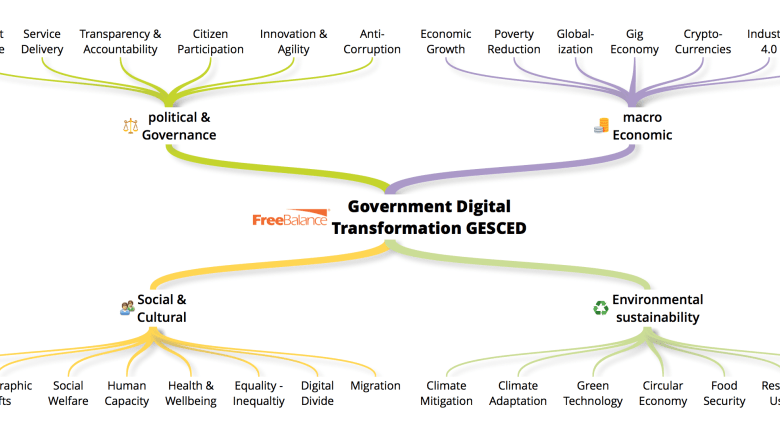
Why Every Public Sector Org Needs a Modern DX Platform
Why every public sector org needs a modern DX platform? It’s not just about keeping up with the Joneses; it’s about fundamentally transforming how citizens interact with government services. In today’s digital age, outdated systems create bottlenecks, frustrate users, and ultimately hinder the very mission of public service. This post dives into why upgrading to a modern digital experience (DX) platform is no longer a luxury, but a necessity for any public sector organization striving for efficiency, security, and improved citizen engagement.
We’ll explore the challenges legacy systems present, the transformative benefits of modern DX platforms, key features to look for, and practical strategies for successful implementation. From streamlining tax collection to enhancing healthcare access, we’ll showcase how a modern DX platform can revolutionize public service delivery and build a more responsive, efficient, and citizen-centric government.
The Current State of Public Sector Digital Transformation
Public sector organizations are facing immense pressure to modernize their operations and deliver better services to citizens in an increasingly digital world. This transformation, however, is often fraught with challenges, stemming from a complex interplay of legacy systems, budgetary constraints, and a lack of skilled personnel. The path to effective digital transformation requires a strategic approach that acknowledges these hurdles and leverages the power of modern technology to overcome them.
Many public sector bodies are grappling with outdated infrastructure and processes. The sheer scale and complexity of their operations, often involving multiple interconnected systems inherited over decades, present significant obstacles to modernization. Resistance to change within established hierarchies, coupled with concerns about data security and privacy, further complicate the process. This creates a significant gap between citizen expectations for seamless, efficient digital services and the reality of fragmented, often frustrating, interactions with government agencies.
Legacy Systems and Their Impact on Efficiency
Legacy systems, while often robust and reliable in their specific domain, frequently lack the flexibility and interoperability needed for effective digital transformation. Three key areas where these systems hinder efficiency and public service delivery are data management, citizen interaction, and internal process automation. The following table illustrates the stark contrast between legacy systems and modern DX platforms in these areas:
| Feature | Legacy Systems | Modern DX Platforms |
|---|---|---|
| Data Management | Data silos, limited data sharing, difficulty in data analysis, high maintenance costs, inflexible data structures. Often involves disparate systems that don’t communicate effectively, resulting in duplicated data entry and a lack of a single source of truth. | Centralized data repositories, improved data sharing capabilities, advanced analytics tools, reduced maintenance costs, flexible and scalable data structures. Enable efficient data analysis, real-time insights, and informed decision-making. |
| Citizen Interaction | Limited online services, complex processes, lengthy wait times, lack of personalized experiences, reliance on paper-based forms. Citizens often face frustration navigating multiple portals and dealing with outdated communication channels. | Seamless online portals, personalized services, simplified processes, improved accessibility, integrated communication channels. Provide citizens with convenient, user-friendly interfaces and streamlined access to information and services. |
| Internal Process Automation | Manual processes, limited automation, high error rates, low efficiency, difficulty in tracking progress. Reliance on manual data entry and paper-based workflows leads to inefficiencies and increased operational costs. | Automated workflows, improved efficiency, reduced error rates, real-time tracking, enhanced collaboration. Streamline internal processes, reducing manual tasks and improving overall productivity. |
Outdated Technology and Citizen Engagement
Outdated technology directly impacts citizen engagement and satisfaction. When citizens encounter slow, cumbersome, or inaccessible online services, their trust in government institutions diminishes. The inability to access information easily, or to interact with government agencies in a timely and efficient manner, leads to frustration and dissatisfaction. For example, a complex tax filing system that requires multiple downloads, manual calculations, and physical mail submissions will inevitably result in lower citizen satisfaction compared to a streamlined online system with integrated guidance and automatic calculations.
This negative experience can lead to decreased civic participation and erode public trust in government’s ability to deliver effective services. A modern DX platform, conversely, can empower citizens with user-friendly interfaces, personalized services, and seamless access to information, fostering greater engagement and satisfaction.
Benefits of a Modern DX Platform for Public Sector Organizations

A modern digital experience (DX) platform offers a transformative opportunity for public sector organizations, moving beyond simple digitization to create truly citizen-centric services and more efficient internal operations. By integrating various systems and streamlining processes, these platforms unlock significant benefits across service delivery, security, and cost-effectiveness.Implementing a modern DX platform leads to substantial improvements in how citizens interact with government services.
The increased efficiency and accessibility directly translate into a better experience for everyone.
Improved Citizen Services
A well-implemented DX platform dramatically improves the citizen experience. It’s no longer about navigating confusing websites or dealing with lengthy paperwork. Instead, it’s about providing seamless, personalized, and accessible services.
- 24/7 Service Availability: Citizens can access services anytime, anywhere, eliminating the constraints of traditional office hours. Imagine accessing your driver’s license renewal online at 2 AM, without waiting in line.
- Personalized Experiences: Platforms can tailor services based on individual needs and preferences. For example, a platform could proactively notify citizens about upcoming tax deadlines or automatically pre-fill forms with existing data.
- Simplified Processes: Complex procedures can be simplified through intuitive interfaces and automated workflows. Applying for a building permit could be reduced from weeks to days, with clear progress updates along the way.
- Improved Accessibility: DX platforms can ensure services are accessible to all citizens, regardless of their technological skills or disabilities. This includes features like screen readers and multilingual support.
- Enhanced Communication: Platforms can facilitate seamless communication between citizens and government agencies through secure messaging systems and online portals. Citizens can easily track the status of their requests and receive timely updates.
Enhanced Data Security and Compliance
Public sector organizations handle sensitive citizen data, making robust security paramount. A modern DX platform provides a centralized and secure environment for managing this data, minimizing risks and ensuring compliance with regulations.A modern DX platform offers features like:
- Role-Based Access Control (RBAC): This ensures that only authorized personnel can access specific data, preventing unauthorized access and data breaches.
- Data Encryption: Data both in transit and at rest is encrypted, protecting it from unauthorized access even if a breach occurs. This is crucial for protecting sensitive personal information like social security numbers and medical records.
- Audit Trails: Detailed logs of all data access and modifications are maintained, enabling thorough auditing and accountability. This is vital for compliance with regulations like GDPR and HIPAA.
- Regular Security Updates: The platform is regularly updated with the latest security patches, minimizing vulnerabilities and protecting against emerging threats. This proactive approach is essential in the ever-evolving landscape of cyber security.
Cost Savings and Efficiency Gains
Automation and streamlined processes enabled by a modern DX platform lead to significant cost savings and increased efficiency across the public sector.The reduction in manual processes translates to:
- Reduced Operational Costs: Automation minimizes the need for manual data entry, reducing labor costs and freeing up staff for more strategic tasks. For example, automated processing of benefit applications can significantly reduce the workload on caseworkers.
- Improved Resource Allocation: Resources are allocated more effectively, leading to better use of budget and personnel. This means more efficient use of taxpayer money.
- Faster Service Delivery: Automated processes speed up service delivery, reducing wait times and improving citizen satisfaction. This can be seen in faster processing of applications for permits, licenses, or benefits.
- Reduced Errors: Automation minimizes human error, leading to more accurate and reliable service delivery. This translates into fewer costly mistakes and less time spent correcting them.
Key Features of a Modern DX Platform
A modern digital experience (DX) platform for public sector organizations needs to go beyond simply digitizing existing processes. It must empower agencies to deliver seamless, citizen-centric services, improve internal efficiency, and foster data-driven decision-making. This requires a robust and flexible platform incorporating a range of essential features.
The right platform will not only streamline operations but also enhance trust and transparency in government services. Citizens expect a consistent and user-friendly experience across all government interactions, and a modern DX platform is crucial for meeting these expectations.
Essential Features of a Modern Public Sector DX Platform
A truly effective DX platform for the public sector must include a carefully selected set of features. These features should work together to create a holistic and integrated system that improves both citizen and employee experiences.
- Low-code/no-code development environment: This allows for rapid prototyping and deployment of new services and applications, reducing reliance on specialized IT staff and accelerating time-to-market for new initiatives. This is particularly crucial in the public sector, where agility and responsiveness to changing needs are paramount.
- API-driven architecture: Facilitates seamless integration with existing legacy systems and third-party applications, ensuring data flows smoothly across the organization and minimizing data silos. This interoperability is vital for a holistic view of citizen information and improved service delivery.
- Robust analytics and reporting capabilities: Provides valuable insights into service usage, citizen needs, and operational efficiency. This data-driven approach allows for continuous improvement and informed decision-making, leading to more effective resource allocation and optimized service delivery.
- Citizen-centric design tools: Empowers developers to create user-friendly interfaces and experiences tailored to the specific needs of different citizen demographics. Accessibility features and multilingual support are crucial for ensuring inclusivity and equitable access to services.
- Secure identity and access management (IAM): Provides a secure and reliable way for citizens to access government services online, protecting their personal information from unauthorized access. This is essential for building trust and ensuring the integrity of government systems.
- Workflow automation and process orchestration: Streamlines internal processes, reducing manual tasks and improving efficiency. This automation frees up staff to focus on more complex and strategic tasks, ultimately improving service delivery.
Interoperability and Data Integration
Interoperability is not merely a desirable feature; it’s a fundamental requirement for a successful public sector DX platform. Data silos create inefficiencies and hinder effective service delivery. A modern platform must enable seamless data exchange between different agencies and departments, allowing for a unified view of citizen information and streamlined processes. For example, imagine a scenario where a citizen applies for a driver’s license and the system automatically verifies their identity and address using data from other government databases.
This eliminates redundant paperwork and improves the overall citizen experience. This requires robust data integration capabilities, including support for various data formats and protocols.
Security Features for Protecting Sensitive Citizen Data
Protecting sensitive citizen data is paramount in any public sector application. A modern DX platform must incorporate robust security features to mitigate risks and ensure compliance with relevant regulations. Failure to do so can lead to significant reputational damage and legal consequences.
Okay, so why does every public sector org need a modern DX platform? Think streamlined processes and improved citizen services. A big part of that is enabling rapid app development, and that’s where exploring options like domino app dev, the low-code and pro-code future , comes in. Ultimately, a robust DX platform empowers public sector organizations to be more agile and responsive to the needs of their constituents.
- Data encryption both in transit and at rest: Protects data from unauthorized access, even if a breach occurs.
- Multi-factor authentication (MFA): Adds an extra layer of security to access control, reducing the risk of unauthorized access.
- Regular security audits and penetration testing: Identifies vulnerabilities and ensures the platform remains secure.
- Compliance with relevant data privacy regulations (e.g., GDPR, CCPA): Ensures the platform adheres to legal requirements for data protection.
- Intrusion detection and prevention systems (IDS/IPS): Monitor network traffic for malicious activity and prevent unauthorized access.
Implementation and Adoption Strategies
Implementing a modern DX platform in a public sector organization is a significant undertaking, requiring careful planning, strong leadership, and a commitment to change management. Success hinges on a phased approach that prioritizes user needs and addresses potential challenges proactively. A well-defined strategy ensures smooth transitions and maximizes the platform’s value.
Step-by-Step Implementation Plan
A phased approach is crucial for successful implementation. This minimizes disruption and allows for iterative improvements based on feedback. The following steps provide a framework:
- Needs Assessment and Planning: Begin by thoroughly assessing the organization’s current digital landscape, identifying pain points, and defining clear objectives for the DX platform. This involves stakeholder engagement across departments to understand diverse needs and priorities. A detailed project plan should Artikel timelines, resource allocation, and key performance indicators (KPIs).
- Platform Selection and Procurement: Based on the needs assessment, select a DX platform that aligns with the organization’s requirements and budget. This involves evaluating different vendors, considering factors such as scalability, security, integration capabilities, and vendor support. A robust procurement process ensures transparency and compliance.
- Data Migration and Integration: Migrating existing data to the new platform is a critical step. This requires careful planning to ensure data integrity and minimize downtime. Integration with legacy systems is also essential to avoid data silos and ensure seamless workflows.
- System Testing and Training: Thorough testing is crucial to identify and resolve any bugs or issues before the platform goes live. Comprehensive training programs for employees are essential to ensure they can effectively utilize the platform’s features and functionalities. This should include hands-on training and ongoing support.
- Phased Rollout and Monitoring: Implement the platform in phases, starting with a pilot program in a specific department or area. This allows for early feedback and iterative improvements before a full-scale deployment. Continuous monitoring and performance evaluation are crucial to identify and address any issues that arise.
- Ongoing Optimization and Support: A DX platform is not a one-time implementation; it requires ongoing optimization and support to ensure it remains relevant and effective. This includes regular updates, security patches, and user support to address any questions or issues.
Change Management and Adoption Strategies
Successful adoption requires a comprehensive change management strategy that addresses the human element of the transformation. This includes:
- Communication and Engagement: Keep employees and citizens informed throughout the implementation process. Transparent communication builds trust and reduces resistance to change.
- Training and Support: Provide comprehensive training and ongoing support to help employees and citizens adapt to the new platform. This should include various learning methods, such as online tutorials, workshops, and one-on-one assistance.
- Incentivization and Recognition: Recognize and reward employees who actively embrace the new platform. This encourages adoption and reinforces positive behavior.
- Feedback Mechanisms: Establish mechanisms for collecting feedback from employees and citizens. This allows for continuous improvement and addresses any issues or concerns promptly.
Examples of Successful DX Platform Implementations, Why every public sector org needs a modern dx platform
Several public sector organizations have successfully implemented DX platforms, demonstrating the potential benefits. However, challenges remain.
| Organization Name | Platform Used | Key Benefits | Challenges Faced |
|---|---|---|---|
| City of San Francisco (Example) | [Specific platform name – replace with a real example] | Improved citizen engagement, streamlined service delivery, reduced operational costs. | Resistance to change from some employees, integration with legacy systems. |
| UK Government Digital Service (GDS) (Example) | [Specific platform name – replace with a real example] | Improved government transparency, increased efficiency, better citizen experience. | Data security concerns, maintaining consistency across different government departments. |
| [Another Public Sector Organization – replace with a real example] | [Specific platform name – replace with a real example] | [Specific benefits – replace with real benefits] | [Specific challenges – replace with real challenges] |
| [Another Public Sector Organization – replace with a real example] | [Specific platform name – replace with a real example] | [Specific benefits – replace with real benefits] | [Specific challenges – replace with real challenges] |
Addressing Specific Public Sector Needs
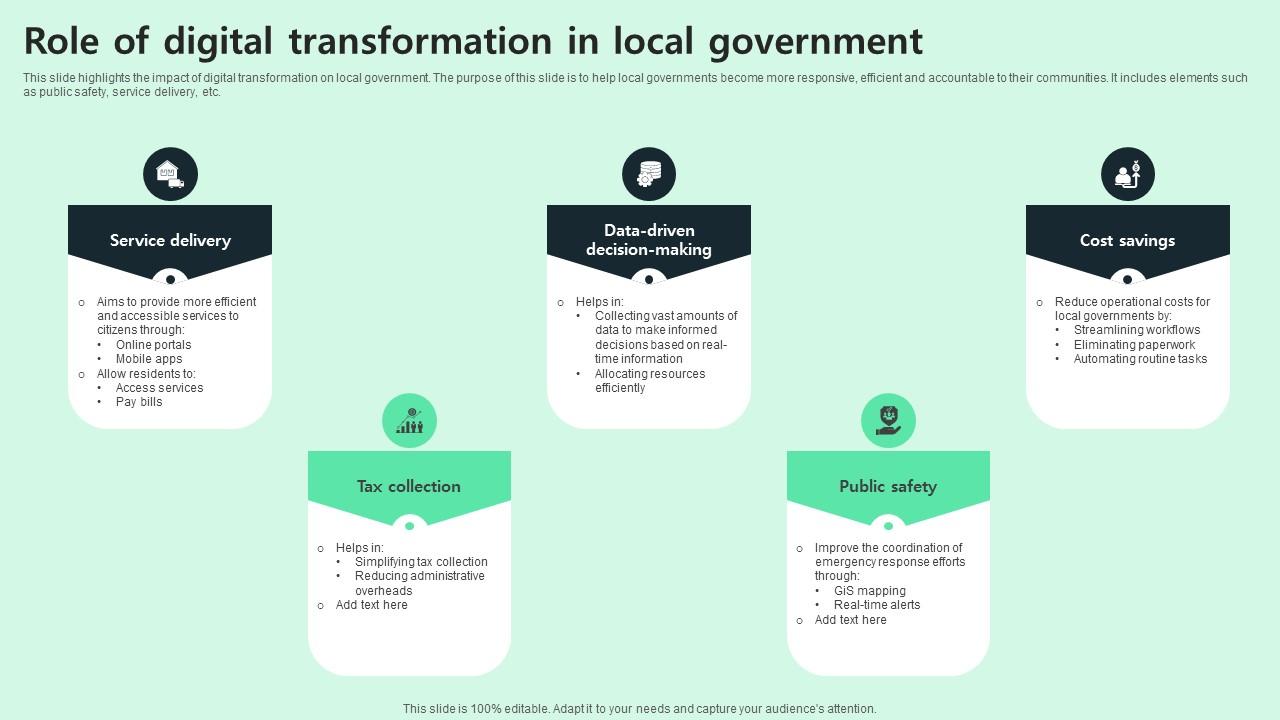
A modern digital experience (DX) platform offers a powerful solution to many challenges faced by public sector organizations. By streamlining processes, enhancing data management, and improving citizen engagement, it can fundamentally reshape how public services are delivered. The following sections illustrate how a DX platform can specifically improve efficiency, transparency, and evidence-based policymaking across various crucial public services.
Improved Efficiency in Public Services
A modern DX platform can significantly enhance the efficiency of various public services. By centralizing data, automating workflows, and providing user-friendly interfaces, it reduces bureaucratic hurdles and improves service delivery times.
- Tax Collection: A DX platform can automate tax filing processes, enabling online submissions, real-time processing, and automated payment reminders. This reduces manual workload for tax authorities, minimizes errors, and improves taxpayer compliance. Imagine a system where citizens can file their taxes in minutes, receive instant acknowledgement, and track their payments online – a significant improvement over paper-based systems.
- Social Services: The platform can streamline applications for benefits, eligibility checks, and disbursement of funds. Automated workflows and integrated data sources ensure faster processing times and reduce administrative delays. For instance, a citizen applying for unemployment benefits could receive a decision within days, rather than weeks, through a streamlined online application and automated verification process.
- Healthcare: A DX platform can facilitate secure online appointment scheduling, electronic health record management, and telehealth consultations. This improves access to healthcare, reduces wait times, and enhances coordination between healthcare providers. Consider a scenario where patients can access their medical records securely online, schedule appointments through a user-friendly portal, and even consult with their doctor remotely – leading to better health outcomes and reduced strain on healthcare facilities.
Enhanced Transparency and Accountability
A key benefit of a modern DX platform is its ability to foster transparency and accountability in government operations. By providing citizens with easy access to information and enabling data-driven oversight, it promotes trust and strengthens democratic processes.
Data transparency is crucial. A well-designed DX platform allows for the publication of government data in open, accessible formats. This allows citizens and oversight bodies to track government spending, monitor program effectiveness, and hold officials accountable. Imagine a publicly accessible dashboard displaying real-time data on government spending, project timelines, and performance metrics – enabling informed public scrutiny and fostering greater trust.
Support for Evidence-Based Policymaking
A modern DX platform plays a vital role in supporting evidence-based policymaking. By centralizing data from various sources, it allows policymakers to access comprehensive insights into the effectiveness of government programs and the needs of the population.
Data-driven decision making is essential for effective governance. The platform enables the aggregation and analysis of large datasets from various public services, providing policymakers with the evidence needed to design effective policies and measure their impact. For example, analyzing data on unemployment rates, education levels, and healthcare access can inform the development of targeted social programs with demonstrable outcomes.
This approach moves away from intuition-based policy and towards data-driven strategies for better outcomes.
Closing Summary: Why Every Public Sector Org Needs A Modern Dx Platform
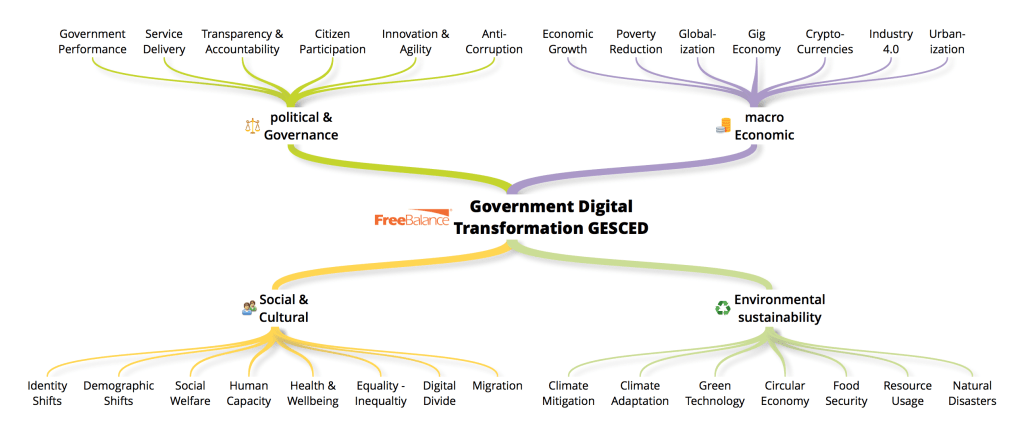
Ultimately, the decision to adopt a modern DX platform isn’t just about technology; it’s about investing in the future of public service. By embracing innovation and prioritizing citizen experience, public sector organizations can unlock significant efficiencies, enhance security, and build stronger relationships with the communities they serve. The journey may require careful planning and strategic execution, but the rewards – a more efficient, secure, and citizen-centric government – are well worth the effort.
So, are you ready to embark on this transformative journey?
Common Queries
What is a DX platform, exactly?
A DX platform is a comprehensive suite of tools and technologies designed to create seamless and engaging digital experiences. For public sector organizations, this means creating user-friendly online portals, mobile apps, and other digital services that make it easier for citizens to access government information and services.
How much does a DX platform cost?
The cost varies significantly depending on the size and complexity of the organization, the features required, and the chosen vendor. However, the long-term cost savings from increased efficiency and reduced operational expenses often outweigh the initial investment.
What about data security concerns?
Modern DX platforms incorporate robust security features to protect sensitive citizen data. These features often include encryption, access controls, and compliance with relevant data privacy regulations.
How long does implementation take?
Implementation timelines vary, depending on the scale and complexity of the project. A phased approach, starting with a pilot project, is often recommended to minimize disruption and ensure successful adoption.

